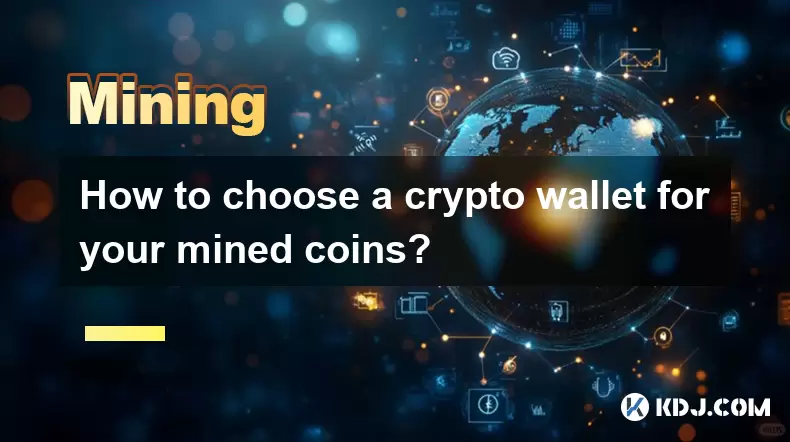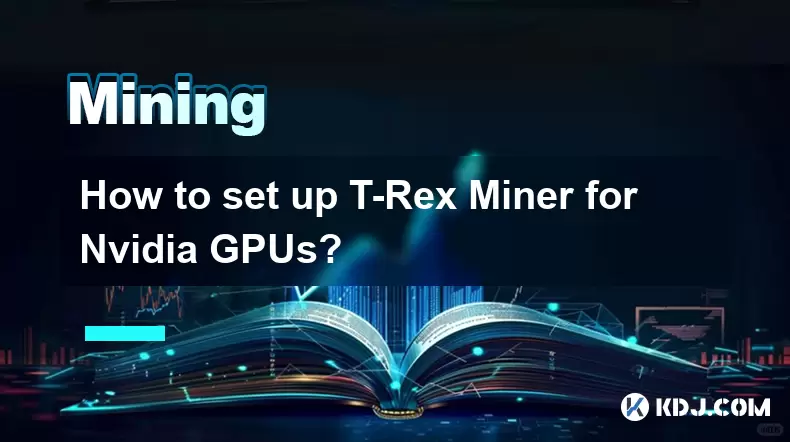-
 Bitcoin
Bitcoin $119100
-1.49% -
 Ethereum
Ethereum $4679
0.55% -
 XRP
XRP $3.133
-3.70% -
 Tether USDt
Tether USDt $1.000
0.05% -
 BNB
BNB $854.6
0.62% -
 Solana
Solana $197.2
-0.54% -
 USDC
USDC $0.9998
0.00% -
 TRON
TRON $0.3645
1.77% -
 Dogecoin
Dogecoin $0.2282
-5.73% -
 Cardano
Cardano $0.9314
6.96% -
 Chainlink
Chainlink $23.04
-2.08% -
 Hyperliquid
Hyperliquid $46.35
0.32% -
 Sui
Sui $3.860
-2.38% -
 Stellar
Stellar $0.4306
-4.11% -
 Bitcoin Cash
Bitcoin Cash $597.1
-3.91% -
 Ethena USDe
Ethena USDe $1.001
0.04% -
 Hedera
Hedera $0.2551
-2.36% -
 Avalanche
Avalanche $24.12
-3.60% -
 Litecoin
Litecoin $123.8
-5.44% -
 Toncoin
Toncoin $3.441
-0.66% -
 UNUS SED LEO
UNUS SED LEO $9.267
0.36% -
 Shiba Inu
Shiba Inu $0.00001315
-4.31% -
 Uniswap
Uniswap $11.16
-6.70% -
 Polkadot
Polkadot $4.066
-4.32% -
 OKB
OKB $101.0
-3.45% -
 Dai
Dai $0.9999
0.02% -
 Bitget Token
Bitget Token $4.633
-2.58% -
 Cronos
Cronos $0.1551
-7.50% -
 Ethena
Ethena $0.7466
-4.53% -
 Aave
Aave $318.7
-1.42%
How to choose a crypto wallet for your mined coins?
Choose a secure, non-custodial wallet like a hardware device for mined coins, ensuring it supports your coin’s blockchain and enables full private key control.
Aug 13, 2025 at 11:36 am

Understanding the Types of Crypto Wallets for Mined Coins
When selecting a crypto wallet for your mined coins, the first step is to understand the different types of wallets available. The primary categories include hardware wallets, software wallets, desktop wallets, mobile wallets, and paper wallets. Each type offers distinct advantages and trade-offs in terms of security, accessibility, and ease of use.
- Hardware wallets are physical devices that store your private keys offline, making them highly resistant to online hacking attempts. They are considered one of the most secure options for storing large amounts of mined cryptocurrency.
- Software wallets run on computers or mobile devices and can be either hot (connected to the internet) or cold (offline). While convenient, they are more vulnerable to malware and phishing attacks.
- Desktop wallets are installed directly on a personal computer and provide full control over your keys. However, if the computer is compromised, so is the wallet.
- Mobile wallets are apps that allow you to manage your coins on the go. They are user-friendly but less secure than hardware options.
- Paper wallets involve printing your public and private keys on paper. Though completely offline, they are prone to physical damage and human error.
The choice depends on how frequently you access your mined coins and the level of security you require.
Compatibility with Mined Cryptocurrencies
Not all wallets support every cryptocurrency, especially newly mined or lesser-known coins. Before choosing a wallet, verify that it supports the specific blockchain of the coin you are mining. For example, if you are mining Monero (XMR), ensure the wallet supports the CryptoNote protocol. Similarly, Bitcoin (BTC) wallets may not support Ethereum (ETH) or its token standards like ERC-20.
To check compatibility:
- Visit the official website of the cryptocurrency you are mining and review their recommended wallets.
- Look for community forums or GitHub repositories where developers list compatible software.
- Confirm whether the wallet supports both the mainnet and testnet versions of the coin.
- Ensure the wallet can generate addresses that match the format required by the blockchain (e.g., Bech32 for SegWit Bitcoin addresses).
Some wallets, such as Exodus or Trust Wallet, support multiple blockchains and tokens, making them suitable for miners working across different networks.
Security Features to Prioritize
Security is paramount when storing mined coins, as they represent real financial value. The most critical feature to look for is private key control—you should always have full ownership of your private keys. Avoid custodial wallets where a third party holds your keys, as this increases counterparty risk.
Essential security features include:
- Two-factor authentication (2FA) to add an extra layer of login protection.
- PIN protection and biometric authentication (fingerprint or face ID) on mobile and hardware wallets.
- Seed phrase backup (typically 12 or 24 words) that allows recovery of funds if the device is lost or damaged.
- Open-source code so the wallet’s security can be independently audited by the community.
- Firmware update capability for hardware wallets to patch vulnerabilities.
Always store your seed phrase offline, preferably in a metal backup device, and never share it digitally.
Setting Up a Hardware Wallet for Mined Coins
If you decide on a hardware wallet like Ledger Nano X or Trezor Model T, the setup process must be followed precisely to ensure security.
- Download the official wallet software from the manufacturer’s verified website only.
- Connect the device to your computer using the provided USB cable.
- Initialize the device by creating a new wallet and writing down the recovery seed phrase exactly as displayed.
- Confirm the seed phrase on the device itself to prevent keylogging attacks.
- Set a strong PIN code directly on the device.
- Install the relevant cryptocurrency app (e.g., Bitcoin, Ethereum) through the wallet interface.
- Generate a receiving address and verify it matches across both the device screen and software.
Never initialize a hardware wallet using a secondhand device, as it may have been tampered with. Always purchase from authorized retailers.
Transferring Mined Coins Safely to Your Wallet
After mining, transferring your coins to your chosen wallet requires careful execution to avoid loss.
- Confirm the receiving address on your wallet app or device before initiating the transfer.
- Start with a small test transaction to ensure the address is valid and funds arrive correctly.
- Wait for the transaction to receive sufficient block confirmations (varies by blockchain) before sending larger amounts.
- Monitor the network fee and choose an appropriate gas price if transferring on Ethereum or similar networks.
- Keep a record of the transaction hash (TXID) for tracking and verification.
For miners using pools, configure the payout settings to send rewards directly to your wallet address. Double-check the address for typos, as crypto transactions are irreversible.
Backup and Recovery Procedures
Losing access to your wallet can result in permanent loss of mined coins. Implementing a robust backup strategy is essential.
- Store your seed phrase in multiple secure physical locations, such as a safe or safety deposit box.
- Use a cryptosteel or similar product to protect the seed from fire, water, or corrosion.
- Never store the seed phrase in digital form—avoid screenshots, cloud storage, or email.
- Test the recovery process on a separate device to ensure the seed phrase works.
- If using a software wallet, export the wallet file and encrypt it with a strong password.
For added protection, consider using a shamir backup (available on some Trezor models), which splits the seed into multiple parts requiring a threshold to reconstruct.
Frequently Asked Questions
Can I use the same wallet for different mined cryptocurrencies?
Yes, but only if the wallet explicitly supports multiple blockchains. Multi-currency wallets like Trust Wallet, Exodus, or Ledger Live allow you to manage various coins in one interface. Always verify support for each specific cryptocurrency before transferring.
What should I do if my wallet device is lost or stolen?
If you have your recovery seed phrase, you can restore your funds on a new device. Immediately purchase a replacement wallet and restore using the seed. Never enter your seed on any device you don’t fully trust.
Is it safe to keep mined coins on a mining pool’s internal wallet?
No. Pool wallets are custodial, meaning the pool operator controls the private keys. Leaving coins there exposes you to risks like platform shutdowns or hacks. Withdraw to your personal wallet as soon as possible.
How do I know if a wallet is truly non-custodial?
A non-custodial wallet gives you full control over your private keys. Check if the wallet provides a seed phrase during setup and allows you to sign transactions locally. Avoid any service that doesn’t let you export your keys.
Disclaimer:info@kdj.com
The information provided is not trading advice. kdj.com does not assume any responsibility for any investments made based on the information provided in this article. Cryptocurrencies are highly volatile and it is highly recommended that you invest with caution after thorough research!
If you believe that the content used on this website infringes your copyright, please contact us immediately (info@kdj.com) and we will delete it promptly.
- Kazakhstan's Crypto Leap: Bitcoin ETF and Central Asia's Digital Finance Future
- 2025-08-13 12:45:19
- BlockDAG Presale Blazes Past $371M: Fundraising Frenzy Fuels Crypto Sensation
- 2025-08-13 13:05:21
- Meme Coins: Chasing the 2025 Surge – Which Will Moonshot?
- 2025-08-13 10:25:23
- Bitcoin's Wild Ride: Rally, Pullback, and What's Next
- 2025-08-13 10:25:23
- Bitcoin, Bitmax, and Institutional Demand: A New Era of Crypto Investment
- 2025-08-13 10:45:12
- Solana, ROAM, and Airdrops: What's the Buzz in 2025?
- 2025-08-13 11:35:13
Related knowledge

How to configure Phoenix Miner for AMD GPUs?
Aug 11,2025 at 03:21am
Understanding Phoenix Miner and Its Compatibility with AMD GPUsPhoenix Miner is a lightweight, high-performance Ethereum mining software designed for ...

How to set up T-Rex Miner for Nvidia GPUs?
Aug 10,2025 at 12:07am
Understanding T-Rex Miner and Its Compatibility with Nvidia GPUsT-Rex Miner is a high-performance mining software designed specifically for Nvidia GPU...

What is "proof-of-work" and how does it relate to mining?
Aug 07,2025 at 02:03pm
Understanding the Concept of Proof-of-WorkProof-of-work (PoW) is a consensus mechanism used in blockchain networks to validate transactions and secure...

How to choose a crypto wallet for your mined coins?
Aug 13,2025 at 11:36am
Understanding the Types of Crypto Wallets for Mined CoinsWhen selecting a crypto wallet for your mined coins, the first step is to understand the diff...

What are the differences between mining on Windows vs. Linux?
Aug 06,2025 at 11:29pm
Overview of Cryptocurrency Mining PlatformsCryptocurrency mining involves using computational power to solve complex cryptographic puzzles and validat...

How to use an old computer for cryptocurrency mining?
Aug 07,2025 at 12:42pm
Understanding the Feasibility of Using an Old Computer for MiningUsing an old computer for cryptocurrency mining may seem outdated, but it is still te...

How to configure Phoenix Miner for AMD GPUs?
Aug 11,2025 at 03:21am
Understanding Phoenix Miner and Its Compatibility with AMD GPUsPhoenix Miner is a lightweight, high-performance Ethereum mining software designed for ...

How to set up T-Rex Miner for Nvidia GPUs?
Aug 10,2025 at 12:07am
Understanding T-Rex Miner and Its Compatibility with Nvidia GPUsT-Rex Miner is a high-performance mining software designed specifically for Nvidia GPU...

What is "proof-of-work" and how does it relate to mining?
Aug 07,2025 at 02:03pm
Understanding the Concept of Proof-of-WorkProof-of-work (PoW) is a consensus mechanism used in blockchain networks to validate transactions and secure...

How to choose a crypto wallet for your mined coins?
Aug 13,2025 at 11:36am
Understanding the Types of Crypto Wallets for Mined CoinsWhen selecting a crypto wallet for your mined coins, the first step is to understand the diff...

What are the differences between mining on Windows vs. Linux?
Aug 06,2025 at 11:29pm
Overview of Cryptocurrency Mining PlatformsCryptocurrency mining involves using computational power to solve complex cryptographic puzzles and validat...

How to use an old computer for cryptocurrency mining?
Aug 07,2025 at 12:42pm
Understanding the Feasibility of Using an Old Computer for MiningUsing an old computer for cryptocurrency mining may seem outdated, but it is still te...
See all articles

























































































